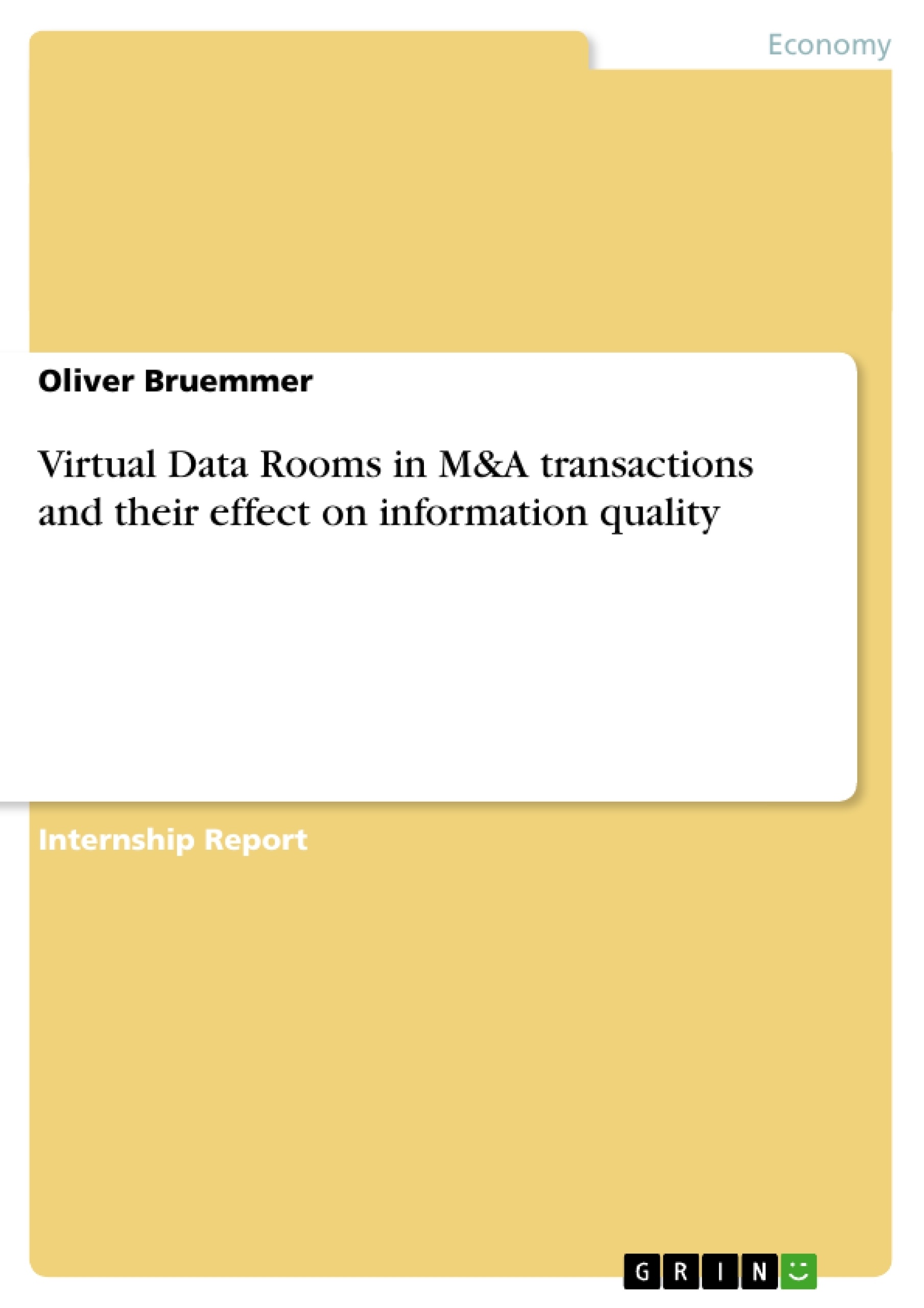Merger & Acquisitions represent a knowledge-intense process. An enormous amount of information is involved in every step from the beginning to completion of a deal, and every professional engaged in the transaction sees himself confronted with an ever broader pool of information and data many times obtained with the assistance of information technology. Information technology thus provides, on one hand, the opportunity for improved information handling. On the other hand, the administration of information technology itself can further add a tremendous amount of complexity to a process. As a consequence of this massive information overload, the issue of information quality has gained momentum. With the vast diffusion of information technology and the advent of the information age, the assessment of information quality began to draw upon the attention of researchers. Over the years, several information quality frameworks have been developed to help practitioners recognize and produce better quality information.It is the objective of this paper to apply and evaluate “the fit for use” of such a framework to the due diligence process within an M&A transaction. Furthermore, the application of the framework in this paper should enable people to better judge the benefits of currently widely-used virtual data rooms in comparison to their physical counterparts.4Ultimately, an inference should be drawn about the potential of improving information quality in the overall process of M&A.
Inhaltsverzeichnis (Table of Contents)
- Introduction
- Nature of the Problem and Objective
- Methodology and Structure
- Definition of Key Terms
- Key Terms in the Domain of Mergers & Acquisitions
- Key Terms in the Domain of Information Quality Management
- The Merger and Acquisitions Process
- Forms of Merger and Acquisitions and Steps in the Process
- Crucial Information in the Planning Phase of the Process
- The Information Quality Framework
- Introduction of the Framework
- Case Study: Information Quality an Virtual Data Rooms
- Introduction to Physical Data Rooms
- Introduction to Virtual Data Rooms
- Comparison of Information Quality
- Further Improvement of Information Quality in Virtual Data Rooms
- Summary and Conclusion
Zielsetzung und Themenschwerpunkte (Objectives and Key Themes)
This paper aims to evaluate the "fit for use" of an information quality framework within the due diligence process of a merger and acquisition (M&A) transaction. The analysis focuses on comparing the benefits of virtual data rooms (VDRs) to traditional physical data rooms (PDRs). The objective is to assess the potential of improving information quality throughout the entire M&A process.
- Information Quality in M&A Transactions
- The Role of Virtual Data Rooms
- Comparison of Information Quality in VDRs and PDRs
- The Information Quality Framework
- Improving Information Quality in M&A Processes
Zusammenfassung der Kapitel (Chapter Summaries)
The first chapter introduces the problem of information overload in M&A transactions and outlines the paper's objectives. Chapter two defines key terms relevant to both M&A and information quality management. Chapter three explores the various stages of the M&A process, including different forms and the critical information needed during the planning phase. Finally, Chapter four introduces the information quality framework and examines its application to VDRs and PDRs within the context of M&A.
Schlüsselwörter (Keywords)
This paper centers on the application of information quality management to M&A transactions. Key concepts include information overload, due diligence, virtual data rooms, physical data rooms, information quality frameworks, and the assessment of information quality in the context of M&A.
- Quote paper
- Oliver Bruemmer (Author), 2006, Virtual Data Rooms in M&A transactions and their effect on information quality, Munich, GRIN Verlag, https://www.grin.com/document/71490




